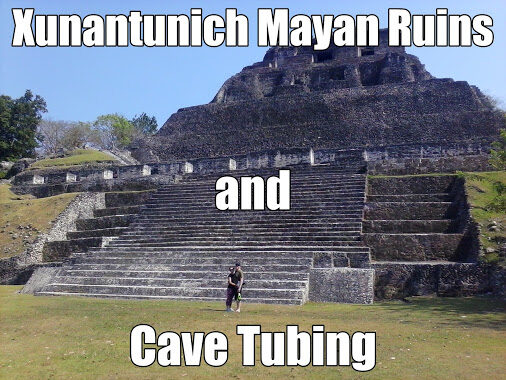About Belize
Belize formerly known as British Honduras, is a Caribbean country located on the northeastern coast of Central America. Belize is bordered on the northwest by Mexico, on the east by the Caribbean Sea, and on the south and west by Guatemala. It has an area of 22,970 square kilometres (8,867 sq mi) and a population of 408,487 (2019). Its mainland is about 290 km (180 mi) long and 110 km (68 mi) wide. It has the lowest population and population density in Central America.The country's population growth rate of 1.87% per year (2018 estimate) is the second highest in the region and one of the highest in the Western Hemisphere.
The Maya Civilization spread into the area of Belize between 1500 B.C. and A.D. 300 and flourished until about 1200.European contact began in 1502 when Christopher Columbus sailed along the Gulf of Honduras. European exploration was begun by English settlers in 1638. This period was also marked by Spain and Britain both laying claim to the land until Britain defeated the Spanish in the Battle of St. George's Caye (1798).It became a British colony in 1840, known as British Honduras, and a Crown colony in 1862. Independence was achieved from the United Kingdom on 21 September 1981.
Belize has a diverse society that is composed of many cultures and languages that reflect its rich history. English is the official language of Belize, while Belizean Creole is the most widely spoken national language, being the native language of over a third of the population. Over half the population is multilingual, with Spanish being the second most common spoken language. It is known for its September Celebrations, its extensive barrier reef coral reefs, and punta music.
Belize's abundance of terrestrial and marine species and its diversity of ecosystems give it a key place in the globally significant Mesoamerican Biological Corridor. It is considered a Central American and Caribbean nation with strong ties to both the American and Caribbean regions. It is a member of the Caribbean Community (CARICOM), the Community of Latin American and Caribbean States (CELAC), and the Central American Integration System (SICA), the only country to hold full membership in all three regional organizations. Belize is the only continental Central American country which is a Commonwealth realm, with Queen Elizabeth II as its monarch and head of state, represented by a Governor General (currently, His Excellence Sir Colville Young).
Belize Languages
English is the official language of Belize. This stems from the country being a former British colony. Belize is the only country in Central America with English as the official language. Also, English is the primary language of public education, government and most media outlets. About half of Belizeans regardless of ethnicity speak a mostly English-based creole called Belize Creole (or Kriol in Belize Creole). Although English is widely used, Kriol is spoken in all situations whether informal, formal, social or interethnic dialogue, even in meetings of the House of Representatives.
When a Creole language exists alongside its lexifier language, as is the case in Belize, a continuum forms between the Creole and the lexifier language. It is therefore difficult to substantiate or differentiate the number of Belize Creole speakers compared to English speakers. Kriol might best be described as the lingua franca of the nation.
Approximately 50% of Belizeans self-identify as Mestizo, Latino, or Hispanic and 30% speak Spanish as a native language.When Belize was a British colony, Spanish was banned in schools but today it is widely taught as a second language. "Kitchen Spanish" is an intermediate form of Spanish mixed with Belize Creole, spoken in the northern towns such as Corozal and San Pedro
